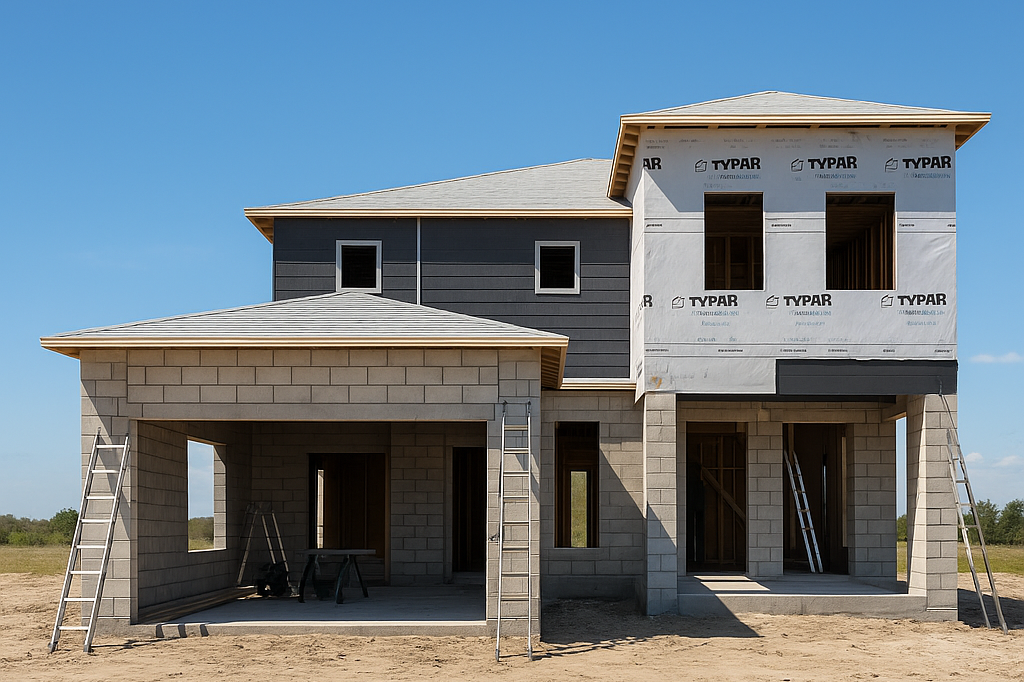Hoje, alguns temem que o mercado imobiliário esteja começando a se parecer com o que era em 2006, pouco antes da crise imobiliária. Um dos fatores que eles estão apontando é a disponibilidade de dinheiro para hipotecas. Artigos recentes sobre a disponibilidade de empréstimos com baixa entrada e programas de assistência para entrada estão causando medo de que estejamos voltando aos maus hábitos vistos 15 anos atrás. Vamos aliviar essas preocupações.
Várias vezes por ano, a Mortgage Bankers Association divulga um índice intitulado The Mortgage Credit Availability Index (MCAI Índice de Disponibilidade dee Crédito). De acordo com seu site:
“O MCAI fornece o único índice quantitativo padronizado que se concentra exclusivamente no crédito hipotecário. O MCAI é … uma medida sumária que indica a disponibilidade de crédito hipotecário em um determinado momento.”
Basicamente, o índice determina o quão fácil é obter uma hipoteca. Quanto mais alto o índice, mais crédito hipotecário disponível temos no mercado. Aqui está um gráfico do MCAI que data de 2004, quando os dados foram disponibilizados pela primeira vez:

Como podemos ver, o índice ficou em cerca de 400 em 2004. O crédito hipotecário tornou-se mais disponível à medida que o mercado imobiliário aqueceu, e então o índice passou de 850 em 2006. Quando o mercado imobiliário despencou, o mesmo aconteceu com o MCAI (para menos de 100), pois o dinheiro das hipotecas se tornou quase impossível de garantir. Felizmente, os padrões de crédito diminuíram um pouco desde então. O índice, entretanto, ainda está abaixo de 150, o que é cerca de um sexto do que era em 2006.
[ipt_fsqm_form id=”8″]
Por que o índice saiu de controle durante a bolha imobiliária?
O principal motivo foi a disponibilidade de empréstimos com padrões de crédito extremamente fracos. Para acompanhar a demanda em 2006, muitos credores hipotecários ofereceram empréstimos que colocavam pouca ênfase na elegibilidade do mutuário.
Os credores estavam aprovando empréstimos sem sempre passar por um processo de verificação para confirmar se o mutuário provavelmente seria capaz de reembolsar o empréstimo.
Alguns desses empréstimos ofereciam taxas de juros baixas e atraentes que aumentaram com o tempo. Os empréstimos eram populares porque podiam ser obtidos rapidamente e sem que o mutuário precisasse fornecer documentação antecipada. No entanto, à medida que as taxas aumentaram, os mutuários tiveram dificuldade para pagar suas hipotecas.
Hoje, os padrões de crédito são muito mais rígidos. As Investopedia explica, os empréstimos arriscados concedidos naquela época são extremamente raros hoje, principalmente porque os padrões de crédito melhoraram drasticamente:
“No rescaldo da crise, o governo dos EUA emitiu novos regulamentos para melhorar as práticas de empréstimo padrão em todo o mercado de crédito, que incluíam o endurecimento do requisitos para a concessão de empréstimos.”
Um exemplo dos padrões de crédito relaxados que levaram à crise imobiliária é a pontuação de crédito FICO® associada a um empréstimo. O que é uma pontuação FICO®? O site myFICO explica:
“Uma pontuação de crédito informa aos credores sobre sua capacidade de crédito (qual a probabilidade de você pagar um empréstimo com base em seu histórico de crédito). É calculado com base nas informações dos seus relatórios de crédito. As pontuações FICO® são o padrão para pontuações de crédito – usadas por 90% dos principais credores.”
Durante o boom imobiliário, muitas hipotecas foram emitidas para mutuários com uma pontuação FICO abaixo de 620. Experian revela que, no mercado de hoje, os credores são mais cautelosos sobre pontuações de crédito mais baixas:
“Estatisticamente falando, 28% dos consumidores com pontuação de crédito na faixa razoável provavelmente se tornarão seriamente inadimplentes no futuro … Alguns credores não gostam dessas probabilidades e optam por não fazê-lo trabalhe com pessoas cujas pontuações FICO® se enquadrem nesta faixa. ”
Definitivamente, ainda existem programas de empréstimo que permitem uma pontuação de 620. No entanto, as instituições de crédito em geral estão muito mais atentas à medição de risco ao aprovar empréstimos. De acordo com o Ellie Mae mais recente Origination Insight Report, a pontuação FICO® média em todos os empréstimos originados em fevereiro foi 753.
O gráfico abaixo mostra os bilhões de dólares em dinheiro de financiamento hipotecário dados anualmente a mutuários com uma pontuação de crédito abaixo de 620.

Em 2006, entidades de financiamento hipotecário concederam US $ 376 bilhões em empréstimos para compradores com pontuação abaixo de 620. No ano passado, esse número foi de apenas US $ 74 bilhões.
[ipt_fsqm_form id=”9″]
Resumo
Ficou com dúvidas?
Agora que você entendeu como o mercado de financiamento imobiliário amadureceu após a bolha de 2008 e 2009. Podemos lhe ajudar a entender o comportamento do mercado imobiliário e assim passar a considerar investir em casas de férias em orlando. Para aproveitar todas as dicas que trouxemos para você e aprofundá-las ainda mais, você pode conversar diretamente com nossos agentes de relacionamento. Eles estão sempre dispostos a conversar com você para esclarecer dúvidas sobre investimentos na Flórida.
Neste texto nós abordamos os segredos da Disney para não ter mosquitos nos parques em Orlando. Se você deseja ler mais conteúdos como o que trouxemos neste artigo, é só ficar ligado aqui no nosso blog.
Gostou do artigo? Fique de olho no nosso blog! Querendo morar ou investir em imóveis na Flórida? Veja a lista de casas a venda na Flórida que selecionamos para você!
|
Getting your Trinity Audio player ready...
|
Leo Martins
Meu papel é criar um ambiente, para que pessoas se conectem à Negócios Imobiliários na Flórida



